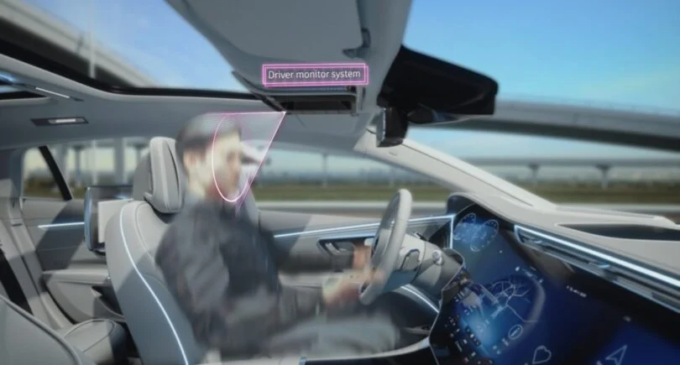3D depth sensors play a central role in vehicle cabin monitoring systems. These sensors are required to meet regulations and NCAP ratings, and to realize the vision of the driver as passenger when the car one day drives autonomously. In collaboration with 3D time-of-flight (ToF) systems specialist pmdtechnologies AG, Infineon has developed the 2nd generation of its REAL3 image sensor for automotive applications. The sensor meets the requirements of functional safety in accordance with the ISO26262 standard.
The chip manufacturer combines its experience in the field of 3D sensors for consumer electronics with that of functional safety in the automotive sector. The result is a sensor with high resolution and a small lens size. “For example, reliable and secure facial authentication enables seamless connection to all services that require authentication, such as payment services, battery charging or access to private data,” explains Christian Herzum, vice president 3D Sensing at Infineon”
The camera also meets driver monitoring requirements so that driver distraction and fatigue are detected in time. This makes it possible to offer a driver monitoring system with safe 3D face recognition with just one ToF camera.
“We were focused from the beginning on improving the robustness of the underlying pmd-based ToF technology against external influences such as sunlight or other interfering light sources. For this reason, the new image sensor exhibits excellent and forward-looking performance even under harsh conditions,” says Bernd Buxbaum, CEO pmdtechnologies.
The sensor is housed in a 9 x 9 mm² plastic BGA package and offers a VGA system resolution of 640 x 480 pixels with a small image circle of 4 mm. This makes it possible to realize lens sizes that are already familiar from smartphones, but now also for automotive applications. The resolution is sufficient for the REAL3 sensor to be used in camera applications with a large field of view, such as front-row passenger monitoring systems. The resulting 3D body models enable estimates of occupant height and weight, and provide data on occupant position relative to the seat and airbags. This information is critical for intelligent deployment of airbags and restraint systems.
The single-chip solution is qualified to AEC-Q100 Grade 2 and, Infineon points out, is the first of its kind to be developed to the ISO26262 (ASIL-B) standard. In addition, the 3D data enables comfort functions such as gesture control or intuitive interior lighting that follows the movements of the occupants. In addition, the sensor can be used as a flash LiDAR in automotive environment detection scenarios.
The time-of-flight technology of the depth sensor is the basis for a wide range of use cases. It provides reliable range information and simultaneously a 2D grayscale image of the entire scene under all ambient light conditions – at night, in sunlight and under changing lighting conditions.
Development samples of the new 3D image sensor chip (IRS2877A) are now available and volume production has begun. The ISO26262-compliant IRS2877AS variant will enter volume production at the end of 2022.
www.infineon.com/real3-automotive



Leave a comment